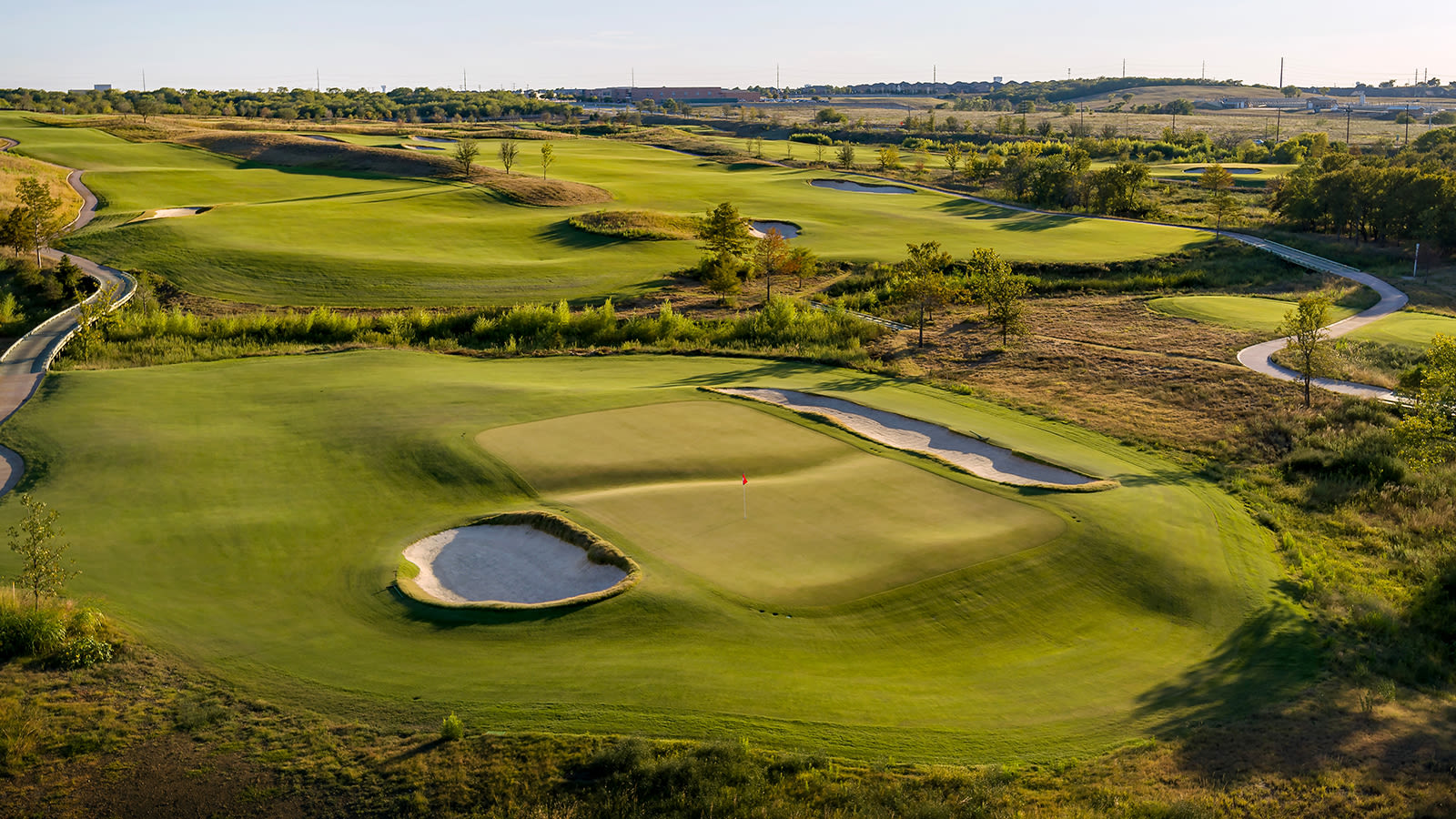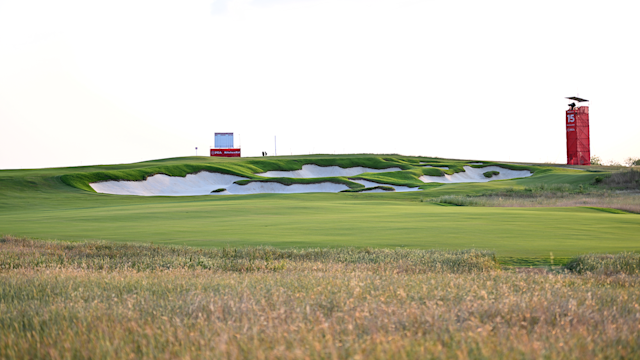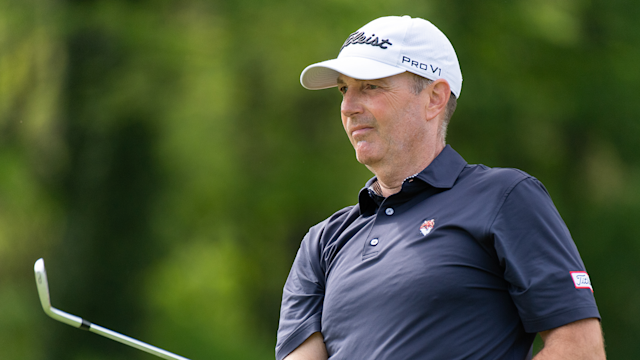Category - Major Events
One Major In, Gil Hanse, Beau Welling Weigh In On The Design of PGA Frisco
By Ryan Adams, PGA
Published on
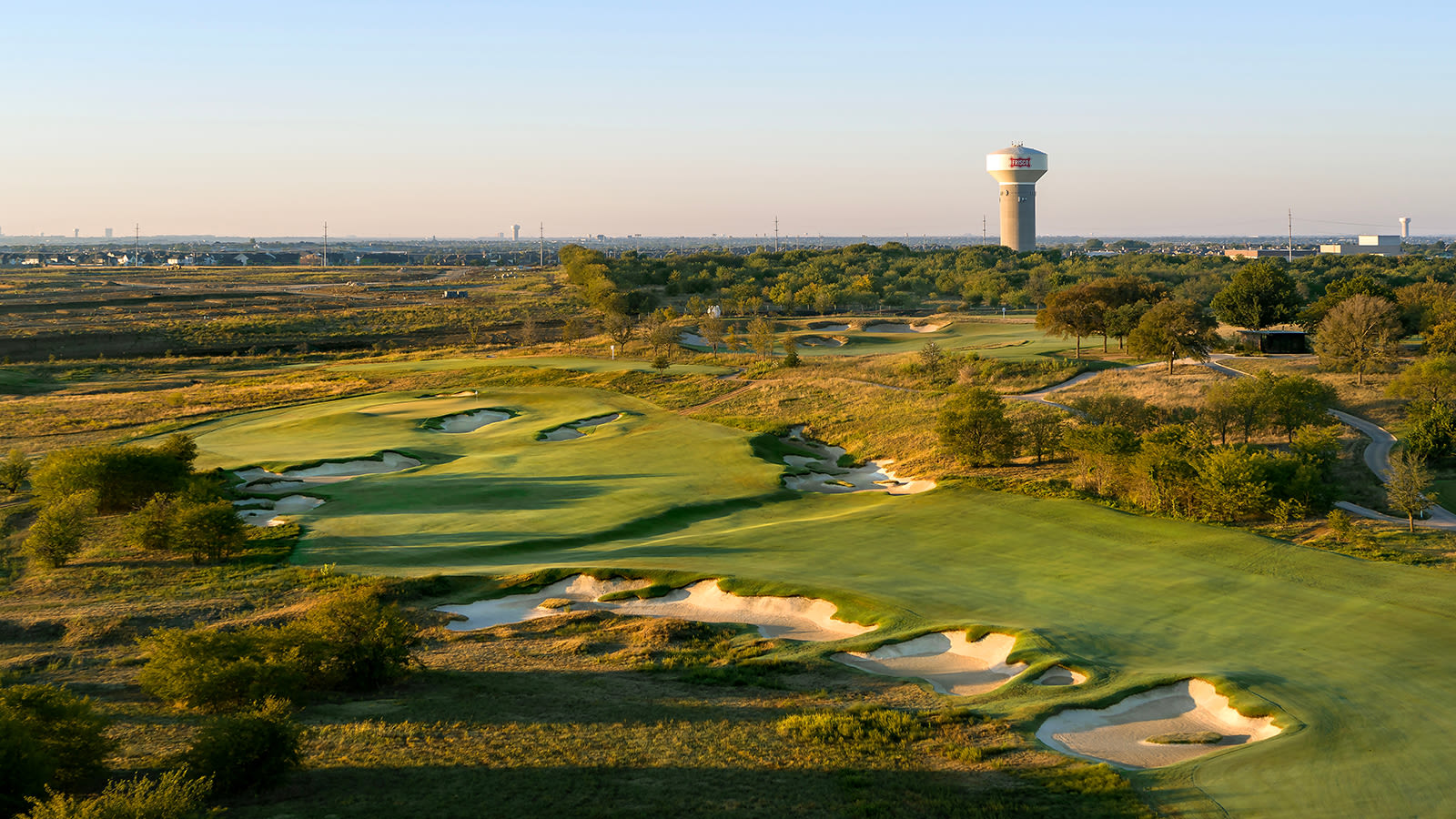
With one major championship nearly under its belt, Fields Ranch East at PGA Frisco has provided quite the setting for some of the world’s best players.
While there’s been record scoring at Fields Ranch East during the KitchenAid Senior PGA Championship, the design philosophy of architect Gil Hanse has shined through on national TV — ribbon tees, rolling hills, elevation changes and risk-reward aplenty, the course has been unique in its ability to stand out.
Adjacent to the East Course is Beau Welling’s Fields Ranch West Course, which rolls along the hills around Panther Creek similar to its sibling course but with a little different design injection in it.
Hanse and Welling had plenty to say about their designs, offering a unique perspective at both the PGA Frisco project and its debut as a major championship venue.
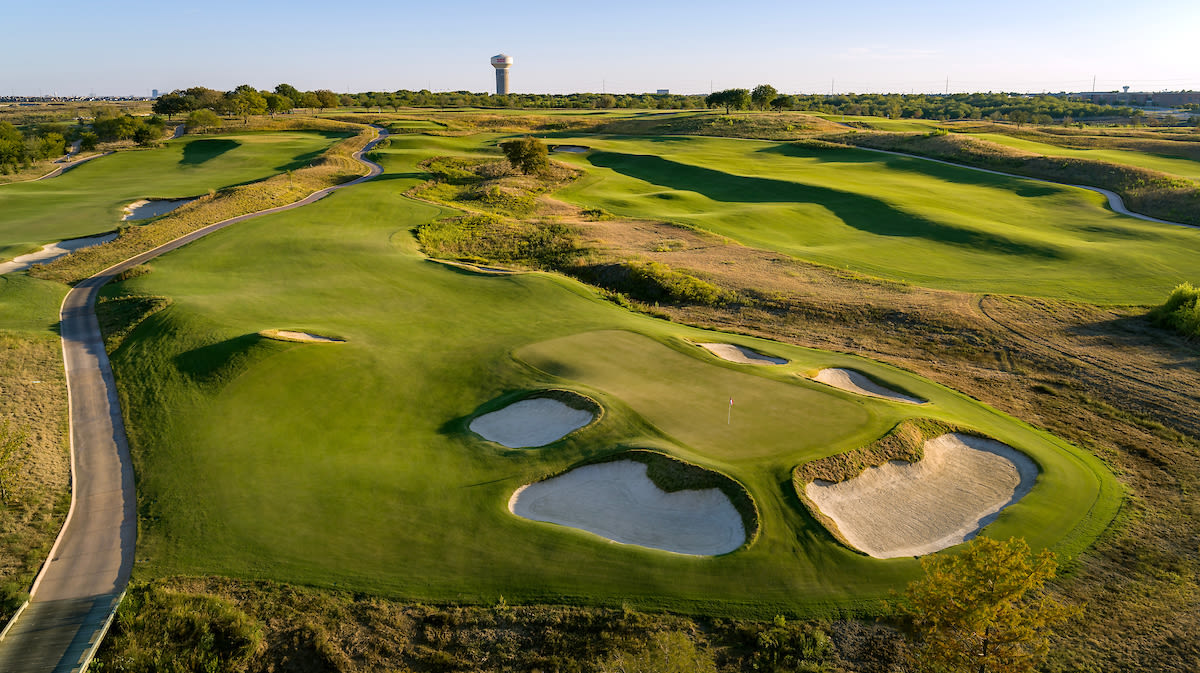
Take us inside a little bit as an architect when the curtain comes down and here's your design, right?
Gil Hanse: Yeah, it's an interesting feeling because we've been fortunate to work on a lot of restorations of classic golf courses that have hosted major championships, and while we're fully invested and that's our work, it's not our design because we believe strongly that what we're trying to do is put Tillinghast back into Winged Foot, put Maxwell back into Southern Hills.
Here at Fields Ranch, it's just us. It's our ideas, our thoughts, what we believe about golf architecture, what we think ultimately will provide a good test of golf for the best players in the world. Not that there's more at stake, but you just feel a little more of a tingle, I think.
I think the closest thing to it would be the course in Rio for the Olympics, and just the enormous sense of pride there for golf to be back in the Olympics, that competition and that project — and the things that were overcome in building that golf course.
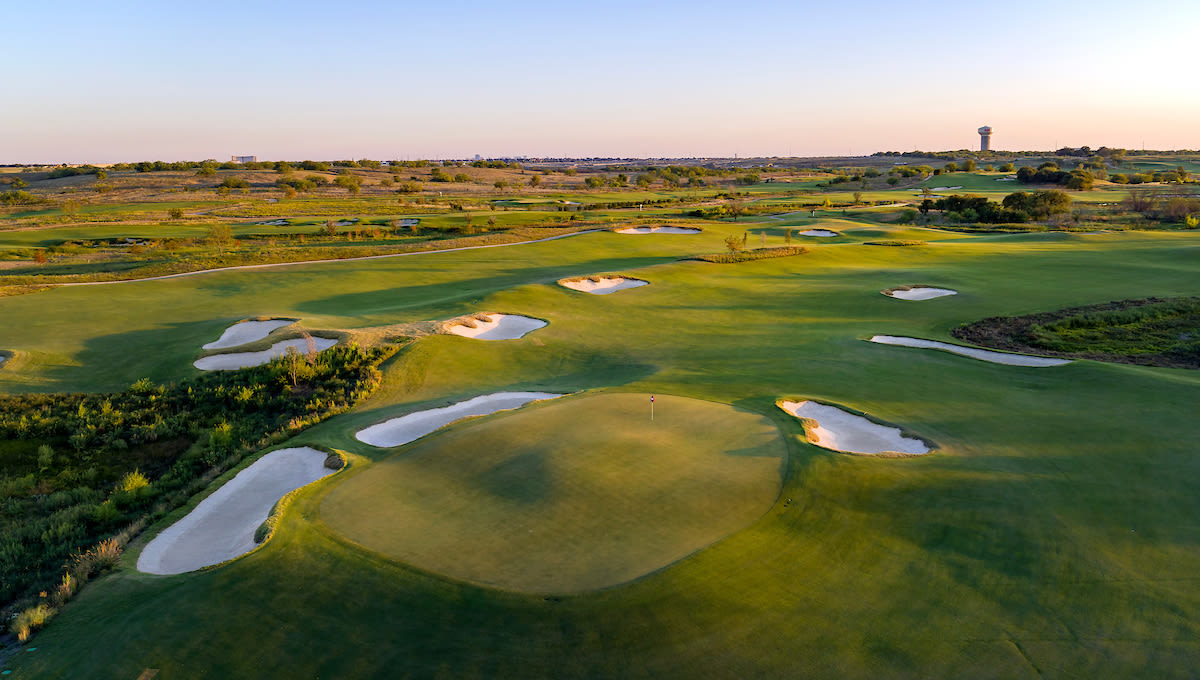
As you're standing there with your feet in the dirt back in 2019 when you're breaking ground, what was your goal ? What is it you wanted to create?
Hanse: Most of our architecture focuses on playability and design and what we're trying to do to challenge golfers, whether that be resort golfers or the best golfers in the world. We're going to get to do both here.
From a land planning perspective, there was a lot more going on here as to the full campus and the design that Beau Welling, who did a great job on the West Course, was very involved in from a land planning standpoint. Then throwing on top of that, the difficulties of this site as it related to engineering.
Panther Creek is a great feature, but when Panther Creek gets angry, it takes bites out of our golf course. We had to armor the golf course and make sure we weren't going to suffer significant damage during a tournament because all the major championships here are going to be in May and June, and guess what, you get thunderstorms here in May and June.
We had to figure out how to get the golf course above the 100-year floodplain level, and then we had to figure out how all that ties in to make those holes look natural.
So you've got all this extra stuff happening, but at the end of the day, when we dug our feet into the dirt here, it was all about what do we think is a compelling test of golf, what do we think are interesting golf holes. There's nuances, there's strategy, there's subtlety. So Jim and I feel like that's really an integral part of what we're trying to create.
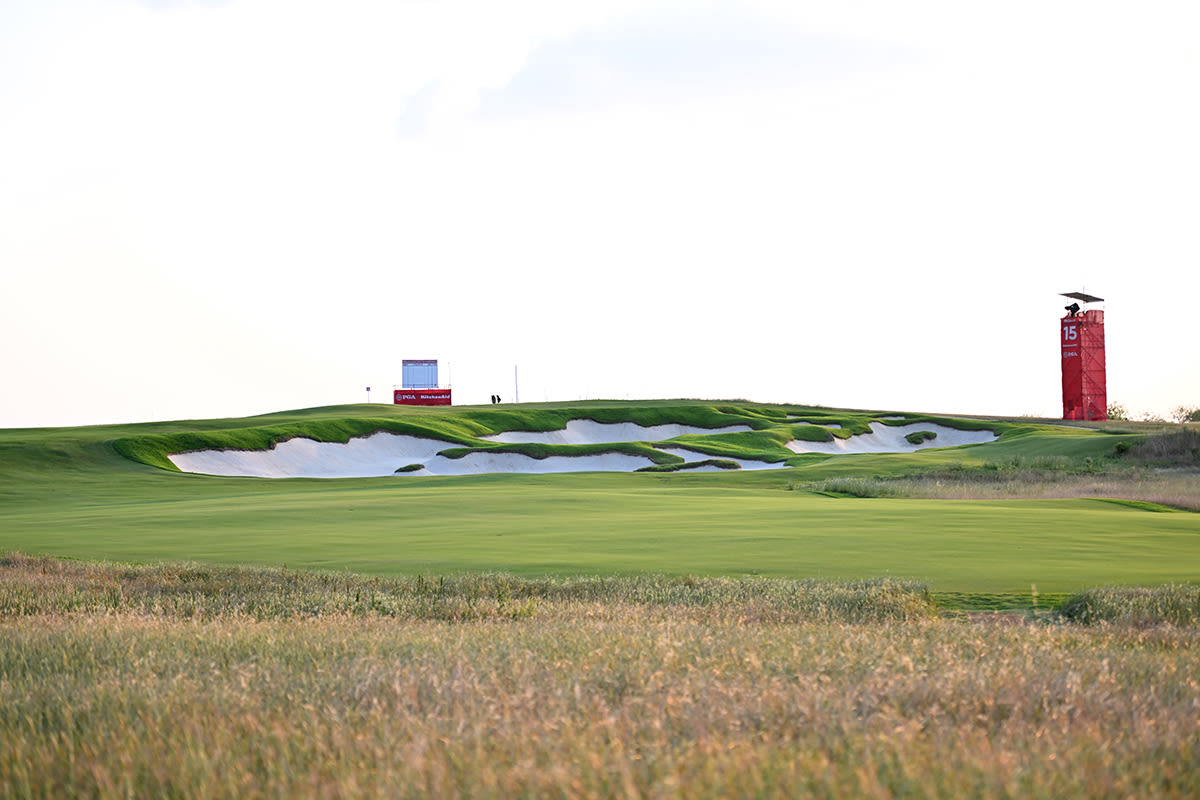
Darren Clarke mentioned that he could easily visualize a Ryder Cup here because of the way the holes can be set up differently for match play. Did you have that in mind, or is it just the final product a result of that's what you ended up with?
Hanse: I think Jim and I design with a match play mentality all the time. We love that style of golf. We love that feel.
One of the things that we're most proud of about this golf course is its flexibility. It is purposely set up with these massive tees that you can basically tee it up anywhere between 100 yards back or forward and have all these opportunities, and they lay in the landscape — they sit there kind of as a big piece of ground.
That flexibility in our minds is a key component of design, and if we do get a Ryder Cup here, I would love to see -- I'm not sure Kerry will still be setting up golf courses then, but if he is, I would love to see what they came up with because in match play there's so many different things he could do with this golf course.
I've always said this, as well, when it comes to major championships. So many people get fixated on score as being a barometer for whether a golf course is good or bad. We don't. We get fixated on who wins on our golf courses. We want to see a really great champion crowned on golf courses that we've had a hand in designing or restoring, and I think that's more telling about the quality of the golf course.
If somebody goes out there and shoots 22-under or somebody goes out there and shoots 5-under to win, it's not an indictment of the golf course if the scoring is low. It's basically saying, hey, the wind didn't blow, the golf course was set up well and these guys played great and they're really good players. We really just feel like we want to see a great competition.
It's unique to be working in tandem with another course designer on two separate courses at the same time. What was that experience like with Gil?
Beau Welling: We had a great time collaborating with Gil and his team throughout the process, and both firms have become good friends over the course of working together on Fields Ranch since late 2015. The collaborative process is something that was quite unique simply due to the substantial nature of the project with two 18-hole courses along with a short course, putting course, and extensive practice facilities.
Our team was responsible for the master planning of the overall site, so from the outset, we were collaborating with Gil’s team to determine which properties would be used for particular courses and how the tournament would work around the East Course and throughout the site.
Throughout construction, our teams were working right next to each other which is also something that was extremely unique. We would see each other but were each running full steam ahead with two separate golf contractors on the adjacent courses so we didn’t really collaborate much once construction started. That is, until the end when it was time to construct The Swing, the short course at Fields Ranch.
The Swing was a total collaboration where we walked holes together and made detail design decisions collectively. We would direct the Hanse shapers and they would direct ours. It was so much fun. And I think that will shine through at The Swing which is going to be an enjoyable experience for all players young and old, regardless of skill level.
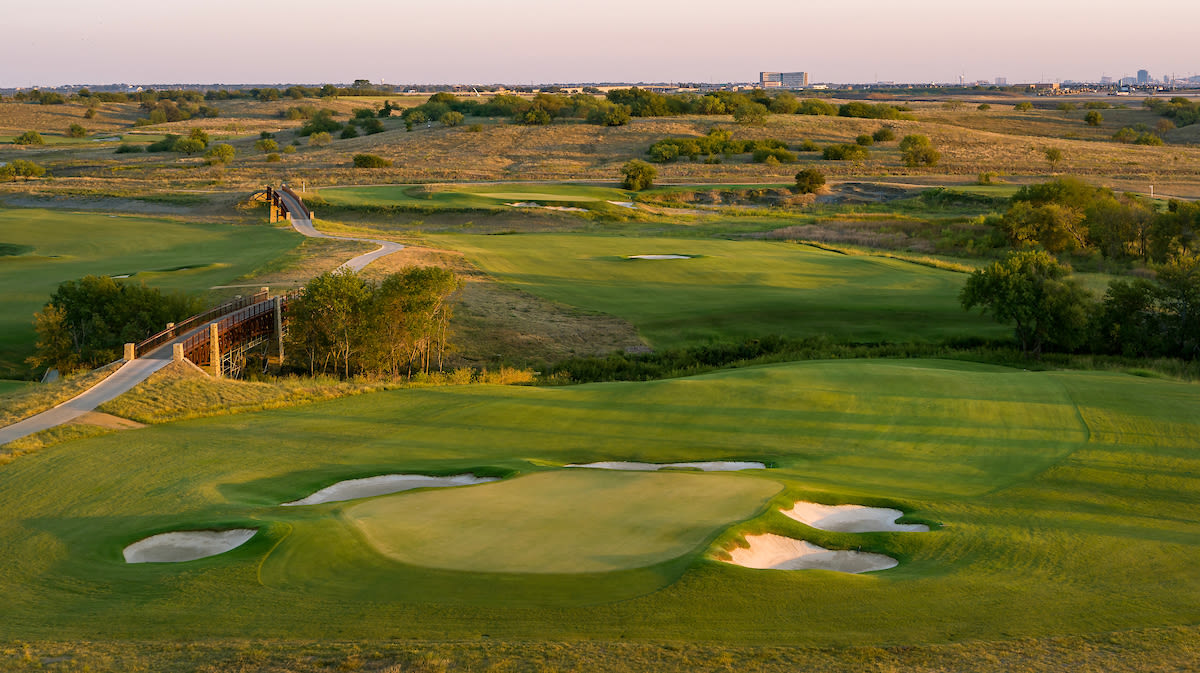
What are your three favorite courses, from a design perspective, and why they help you with your own designs?
Welling: I was lucky enough to be exposed to Augusta National and Cypress Point growing up and have been greatly inspired by Dr. Alister Mackenzie. If you ask any golf course designer what they hope to accomplish in their design, they will likely answer that they want to test the best players while offering an enjoyable and playable experience for higher handicappers (or lower swing speed players).
Aside from Dr. MacKenzie’s designs, the course I grew up playing that’s had a significant impact on my design philosophies and my career is Greenville Country Club (GCC) in South Carolina. Because of its offerings, it produced a lot of great golfers and I believe that is because the programming that was allowed by having a fun and safe place for juniors to learn the game before progressing to the more playable 18-hole course and then honing their skills to then be able to play the 18-hole championship course.
The parallel between Greenville Country Club and Fields Ranch at PGA Frisco is one reason that I was super excited about the opportunity to be involved – though the programming at PGA Frisco is like GCC on super steroids. I believe PGA Frisco is going to have a significant impact on the game of golf here in the United States and I am so honored to be a part of it.
